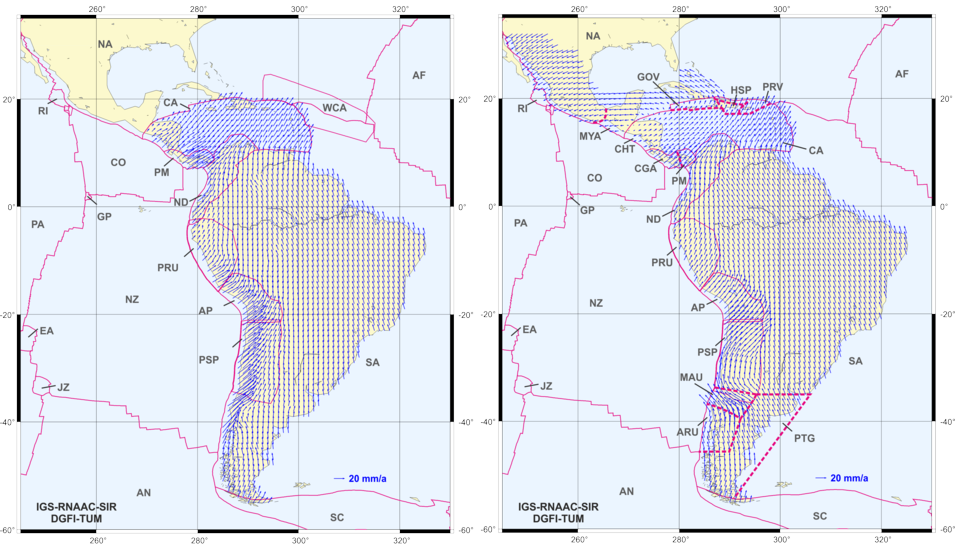SIRGAS: Reference frame for Latin America and the Caribbean
The primary objective of SIRGAS (Sistema de Referencia Geocéntrico para las Américas) is the determination and maintenance of a reference frame in Latin America and the Caribbean as a densification of the ITRF and as a regional realization of the ITRS.
Initially, SIRGAS was realized by means of two continental GPS campaigns: the first one was carried out in May 1995, including 58 stations distributed over South America. The second one was measured in May 2000, comprising 184 stations, among them the stations observed in 1995 and additional points located in the Caribbean, Central, and North America. Today, SIRGAS is realized by a network of about 400 continuously operating GNSS stations. This so-called SIRGAS-CON network replaces the first two SIRGAS realizations and allows a highly-precise monitoring of the reference frame. In 1998, the objectives of SIRGAS were also extended to the vertical datum, where efforts are concentrated on the definition and realization of a modern vertical reference system that allows the accurate combination of high-resolution geoid models with geometric (ellipsoidal) and physical heights.
DGFI-TUM's research in the context of SIRGAS is focused on:
- Weekly processing of the SIRGAS Reference Frame in cooperation with the SIRGAS Analysis Centres installed in Latin America. These activities are developed in the frame of the IGS RNAAC SIR (IGS Regional Network Associate Analysis Center for SIRGAS) and include the generation of weekly loosely constrained solutions and station positions aligned to the ITRF for all the SIRGAS-CON sites;
- Computation of multi-year solutions to estimate the kinematics of the reference frame and to model the station velocity field as a contribution to the Actual Plate Kinematics Models (APKIM);
- Estimation of co-seismic deformation models derived from discrete (weekly) station positions to incorporate seismic discontinuities in the computation of the reference frame; Modelling of seasonal movements at the combination level of the weekly solutions;
- Combined analysis of geometric and physical parameters to define the best possible strategy for the vertical datum unification in the SIRGAS region.
Furthermore DGFI-TUM supports and represents the International Association of Geodesy in SIRGAS. Since 1996 the institute has taken the responsibility to operate the IGS Regional Network Associate Analysis Centre for SIRGAS (IGS RNAAC SIR).

Selected Publications
Arcisstraße 21
80333 München